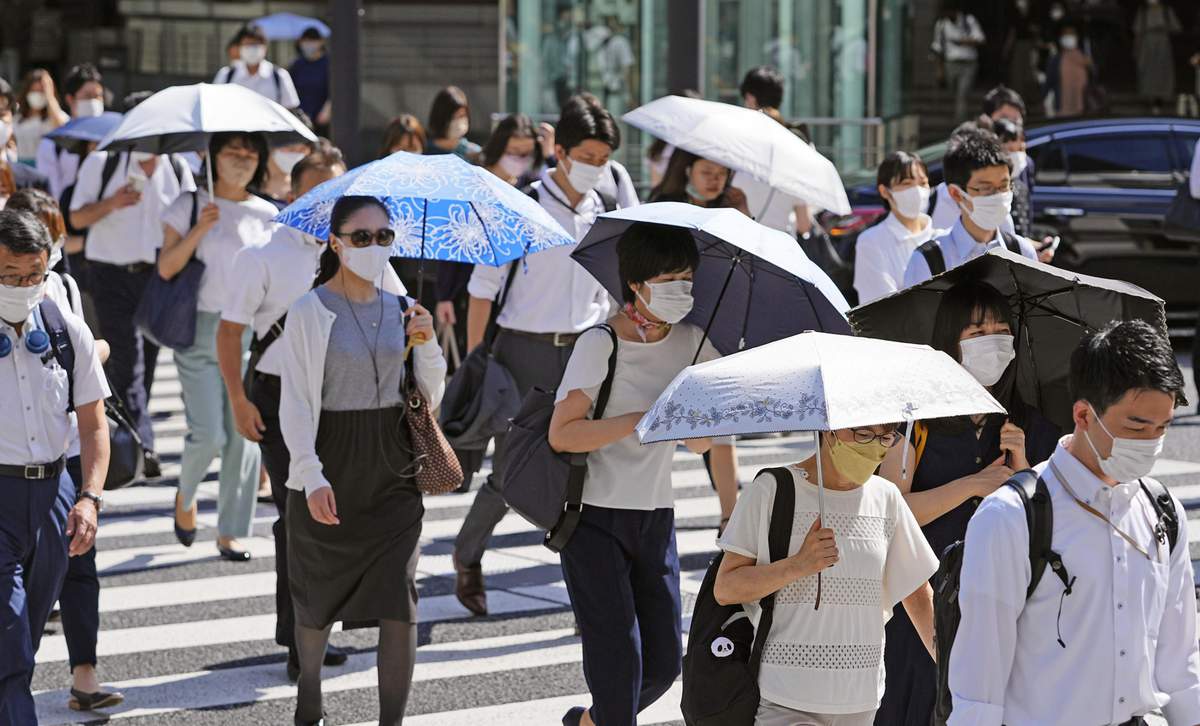Summer in Japan is not for the faint of heart. From late June through early September, the country transforms into a humid, sun-drenched steam bath, with temperatures often climbing above 35°C (95°F). But while visitors might be caught off guard by the intensity, Japanese people have long mastered the art of enduring—and even enjoying—the summer season.
With a mix of tradition, clever design, and cultural know-how, locals have plenty of tricks up their sleeves to stay cool and comfortable. If you’re visiting Japan in the summer months, here’s how to navigate the heat like someone who’s been doing it for years.
The Rhythm of a Japanese Summer
Before you pack your fan and sunhat, it’s helpful to understand how summer unfolds in Japan. It usually begins with tsuyu, the rainy season, from mid-June to mid-July. The skies are often gray, but the air is thick with humidity. Once the rains end, the real heat sets in—July and August bring bright skies, sweltering days, and little relief from the oppressive humidity. September remains hot, though more tolerable. Throughout the summer there is also typhoon season which runs from May through October, with most activity from July to September.
For locals, adapting to this cycle is second nature. Mornings are cherished for their relative coolness, while afternoons often call for strategic shade and air-conditioned retreats.
Cool Like a Local: Everyday Tools and Habits
Walk through any Japanese neighborhood in summer, and you’ll spot people using small hand fans (uchiwa) or portable electric fans hanging from neck straps. These aren’t just accessories—they’re essentials. You’ll also notice cooling towels wrapped around necks, mist sprays being pulled from handbags, and entire sections in convenience stores dedicated to “cooling goods” (reikan guzzu).
Among the most popular items are menthol-infused cooling wipes, which provide a quick icy sensation on the skin, and sprays that can be used on clothes for an instant chill. For the fashion-conscious, Japan offers “cool touch” clothing—breathable, UV-protective fabrics that wick away moisture while blocking the sun.
These little conveniences reflect a broader philosophy: summer isn’t something to be avoided, but to be managed with style and smarts.
Staying Hydrated, the Japanese Way
It’s easy to underestimate how quickly the heat can wear you down. Japanese locals are extremely proactive about hydration. Rather than relying solely on water, many reach for drinks like Pocari Sweat or Aquarius—sports beverages designed to replenish lost electrolytes.
In homes and restaurants, cold barley tea (mugicha) is the drink of choice. It’s caffeine-free, refreshing, and naturally cooling. In fact, it’s often brewed in large jugs and kept in the fridge all summer long. Another local trick? Snacking on umeboshi—salty pickled plums known for helping to prevent heatstroke.
Dressing for Survival
Japanese summer fashion might surprise newcomers. On the hottest days, you’ll still see people in long sleeves or full-length pants—not because they want to be warm, but because they’re protecting themselves from the sun. UV-cut clothing, wide-brimmed hats, parasols, and even arm covers are common sights.
Breathable fabrics like linen and cotton are favored, and airy silhouettes help with airflow. As unusual as it might seem, this sun-smart style helps locals stay cooler longer than minimal clothing might allow.
Some famous brands like MUJI or Uniqlo offer a wide variety of clothes which help regulate the body temperature and deal with sweat and smell.
Focusing on breathable fabrics for clothes can be a gamechanger when it comes to surviving through the Japanese summer heat!
Inside the Summer Home
Even at home, surviving summer is an art form. While air conditioning is widely used, many households take a more energy-conscious approach. Fans are paired with ice packs or bottles to circulate cool air. Bamboo blinds (sudare) are hung outside windows to block sunlight without cutting off airflow. “Cool-touch” bedsheets and pillows, sold everywhere from department stores to 100-yen shops, help make muggy nights more bearable.
What—and When—to Eat
Summer in Japan also brings a shift in diet. Lighter, cold dishes like sōmen (thin noodles served with chilled dipping sauce) or hiyashi chūka (cold ramen with colorful toppings) are staples. Seasonal desserts like kakigōri (shaved ice with flavored syrup) offer sweet relief, and the mid-summer tradition of eating unagi (grilled eel) is believed to restore strength and vitality.
Food stalls and convenience stores roll out special summer menus featuring citrusy flavors, refreshing jellies, and limited-edition drinks. Eating seasonally isn’t just about taste, it can be a survival strategy.
Navigating the Heat Outside
If you’re sightseeing or attending festivals, it’s important to plan your day the way locals do. Outdoor activities are best saved for early morning or late afternoon. Midday, when the sun is at its strongest, is a time for indoor breaks: museums, cafes, shopping malls, or even just a shaded park bench with an icy drink.
You’ll notice that summer festivals often begin in the evening—not only to enjoy the cooler temperatures, but also to bask in the glow of lanterns and fireworks under the night sky. Whether it’s a small neighborhood matsuri or a massive fireworks show, nighttime is when summer in Japan truly comes alive.
When the Heat Gets Too Much
Despite all these precautions, heatstroke (necchūshō) is a real concern. Japanese public awareness campaigns constantly remind people to rest, rehydrate, and watch for symptoms like dizziness, nausea, or the absence of sweat. If you’re feeling unwell, duck into the nearest convenience store or station—they’re air-conditioned and often have helpful staff who can assist.
Embrace the Season
Yes, Japanese summer is intense—but it’s also filled with beauty, flavor, and unforgettable experiences. There’s the sound of cicadas echoing through the trees, the taste of salty watermelon after a long day. There’s a reason many locals secretly love this time of year, despite the sweat and sunburns.
With the right tools, smart planning, and a bit of cultural insight, you too can not just survive the summer in Japan—but enjoy it like someone who’s been doing it their whole life.

